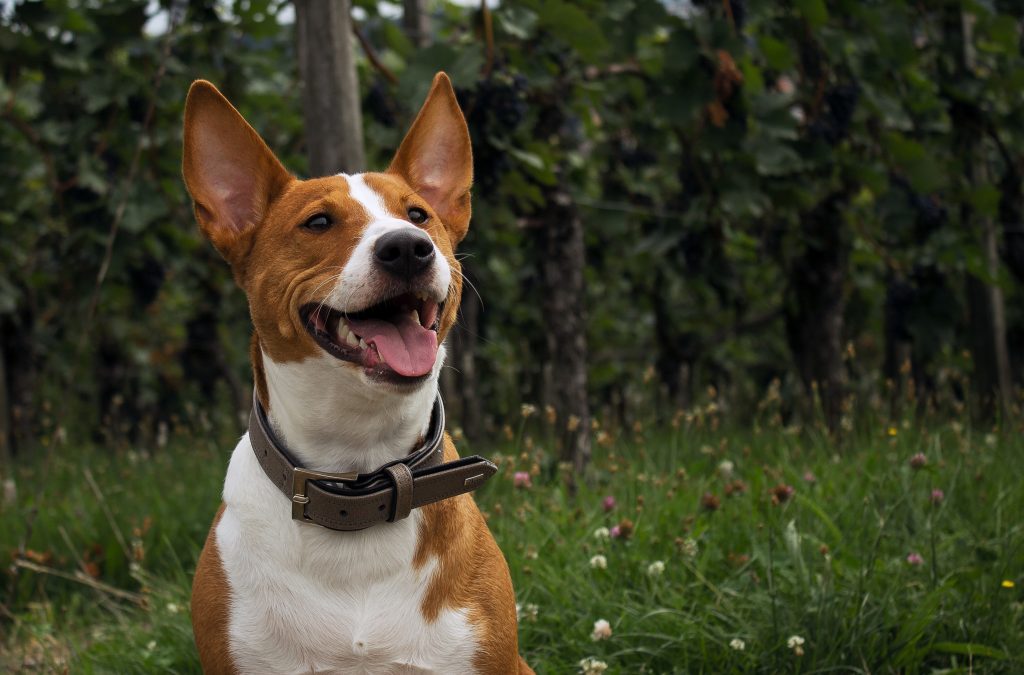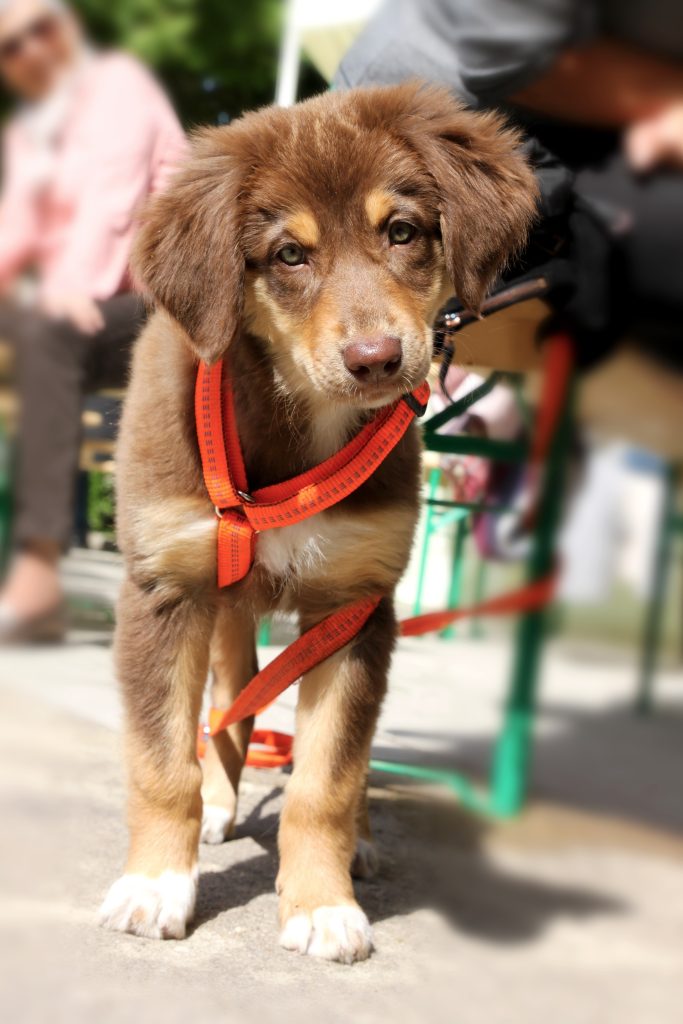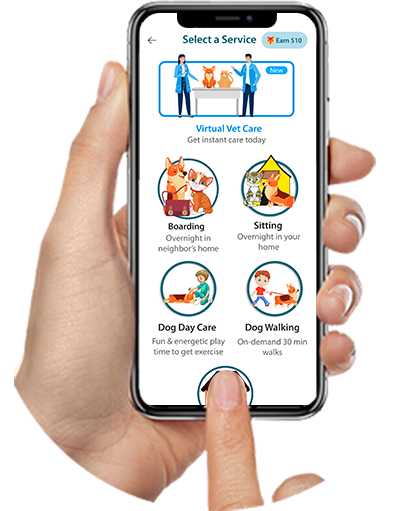Did you know that dogs can also have hypertension? It occurs due to temporary elevations in blood pressure due to stress effects; for example, being in a veterinary hospital. It is important to take several readings and to create as quiet an environment as possible. Hypertension in dogs is often due to an underlying disease and when this is the case, it is called secondary hypertension. If no underlying disease is present or can be identified, then it is called primary hypertension.
Hypertension is more common in older dogs, consistent with the development of underlying diseases such as chronic kidney disease, or excessive levels of steroids produced by the adrenal glands in dogs with Cushing’s syndrome. Younger dogs may develop hypertension if they have kidney disease due to infection (such as leptospirosis) or a developmental kidney abnormality.
The cause of primary hypertension is unknown. Secondary hypertension accounts for a majority of hypertension in dogs and can be attributed to kidney disease, adrenal gland disease, diabetes mellitus (less common), pheochromocytoma (adrenal gland tumor and very uncommon), or central nervous system disease (very rare).
Symptoms of Hypertension In Dogs
The signs of hypertension in dogs are subtle in the initial phases, which may require dog parents to be extra careful when dealing with something this serious. If you notice any unusual behavior in your dog, like bumping into objects, not being able to balance while walking, etc, chances are they may be suffering from hypertension. There are a range of symptoms in dogs that can further confirm if your dog has hypertension and they are as follows:-
- Sudden blindness, bleeding inside the globe of the eye, and persistently dilated pupils
- Detached retinas
- Nervous system signs like depression, head tilt, seizure, disorientation, wobbly or uncoordinated movements circling, weakness or partial paralysis, and back-and-forth movement of the eyes.
- Increased drinking and urination due to chronic kidney disease.
- Blood in urine (called nystagmus)
- Bleeding in the nose and nasal passage
- Abnormal heart rhythms
Treatment Advice
Diet plays a crucial role. Opt for a low-sodium diet designed for heart health or kidney support. This helps in managing blood pressure effectively. Maintaining a healthy weight is also key. If your dog is overweight, your vet can guide you on a weight management plan tailored to their needs. Shedding excess pounds can significantly reduce blood pressure. Medication may be necessary to bring blood pressure under control. Your vet may prescribe medications like ACE inhibitors or calcium channel blockers. These help relax blood vessels and reduce the workload on the heart. Regular check-ups are vital. Your vet will monitor your dog’s blood pressure and adjust treatment as needed to ensure it’s effectively managed over time. Creating a stress-free environment and ensuring regular, moderate exercise are also beneficial. These lifestyle adjustments can help support your dog’s overall cardiovascular health. Remember, managing hypertension in dogs requires a partnership between you and your veterinarian. By working together and following their guidance, you can help your dog lead a healthier, happier life with controlled blood pressure.
If an underlying cause for a dog’s hypertension is found, it will determine how to manage it. Hospitalization can be necessary if the dog experiences a severe hypertension-related consequence such as acute renal failure or hemorrhaging into the eye. Generally speaking, nutrition and medication play a significant role in returning blood pressure to normal when any underlying conditions are properly treated. The treatment of dogs with hypertension depends upon the underlying cause if there is one.
Angiotensin-converting enzyme (ACE) inhibitors, angiotensin II receptor antagonists (ARBs), beta-blockers, diuretics, and calcium channel blockers are among the medications that are frequently used to treat hypertension in dogs. Depending on how the first therapy works, more drugs can be needed. It is widely acknowledged that a therapeutic diet has a significant role in long-term management.
Preventative Measures
Prevention is better than cure. Here are some ways you can ensure good health for your furry friend.
- Regular Veterinary Check-ups: Schedule routine visits with your vet for comprehensive health assessments. Early detection of conditions like kidney disease or hormonal imbalances can prevent hypertension from developing or worsening.
- Balanced Diet: Feed your dog a balanced diet that is appropriate for their age, breed, and health status. Opt for high-quality, low-sodium dog food to support heart health and prevent obesity, which can contribute to hypertension.
- Weight Management: Maintain your dog at a healthy weight through proper diet and regular exercise. Obesity is a significant risk factor for hypertension and other cardiovascular diseases.
- Exercise: Ensure your dog gets regular, moderate exercise tailored to their breed and age. Physical activity helps maintain cardiovascular fitness and can help prevent obesity.
- Stress Management: Minimize stressors in your dog’s environment as much as possible. Chronic stress can elevate blood pressure levels, so providing a calm and predictable routine can be beneficial.
- Monitor Vital Signs: Regularly monitor your dog’s vital signs, including blood pressure, during veterinary visits. Early detection of hypertension allows for prompt intervention and management.
- Routine Dental Care: Poor dental health can lead to systemic inflammation and contribute to hypertension. Implement a regular dental care routine recommended by your veterinarian.
- Medication Adherence: If your dog requires medication for conditions that can lead to hypertension (such as kidney disease), ensure you administer medications as prescribed by your vet. Consistent management of underlying conditions helps prevent complications like hypertension.
Conclusion
Dog hypertension is a dangerous illness that can have a major influence on the health and quality of life, even though it often progresses silently. It is crucial to have routine veterinary treatment and proactive health management because of its subtle nature and propensity to seriously harm organs, especially in older dogs. The good news is that many dogs with hypertension can be effectively treated, lowering the risk of complications and increasing long-term results, with early detection and proper therapy. The more we learn about dog hypertension, the more equipped we are to identify the illness and provide appropriate care. The keys to controlling this condition for dog owners are knowledge of the hazards, routine veterinary examinations, and quick attention to any changes in their dog’s health or behavior.




 Unlimited access and follow ups for continuous pet care
Unlimited access and follow ups for continuous pet care 








